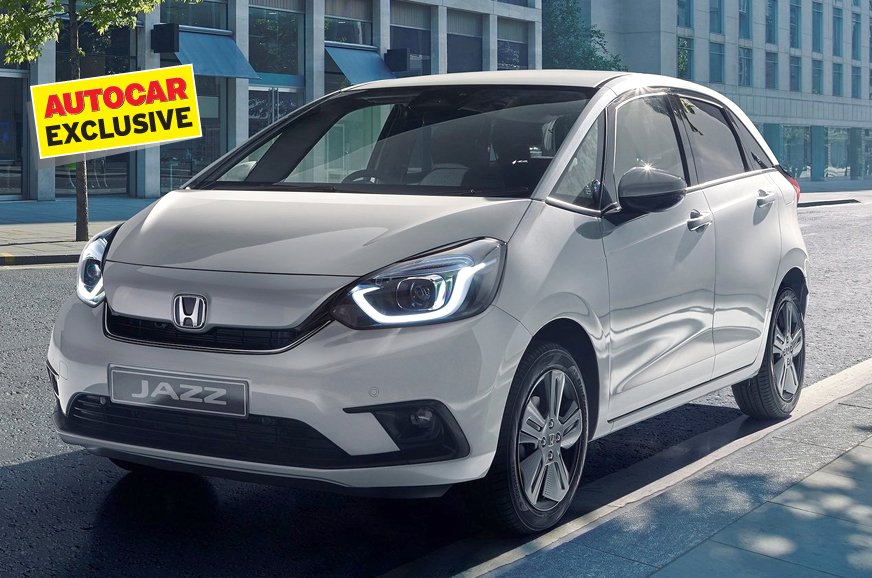
In case you are wondering why we never mentioned an India launch date for the fourth-generation 2020 Honda Jazz, which was globally unveiled at the Tokyo Motor Show two weeks ago, it's because Honda has no plans to bring it to India. There is simply no business case for the new Jazz in the current market scenario.
Honda sells, on average, 963 units of the current Jazz in India every month, a volume base that is too low to justify the huge investment needed to develop and localise the next-generation Jazz, which is a full model change and built on an all-new platform. At its peak in FY2016, Honda sold around 3,450 units of the Jazz a month but it’s unlikely those numbers will be realised again, even with a fresh new model.
The Indian passenger vehicle market is currently witnessing its worst slowdown in decades with sales plummeting by 23 percent in the April-September 2019 period. Though Diwali brought a glimmer of hope with a slight uptick in sales over the previous month (September 2019), the market isn’t showing signs of bouncing back. The premium hatchback segment, in which the Jazz sits, has seen a decline by 13 percent, the result of a sharp shift in customer preferences from premium hatchbacks to SUVs. This is another reason why Honda is hesitant to launch the new Jazz.
Exports would be a good option to boost volumes and achieve the desired economies of scale to make the new Jazz viable but, unlike some of its rival foreign automakers, Honda has never developed India as an export hub.
Jazz not cost-competitive
Also, the Japanese carmaker has historically struggled to make the Jazz cost competitive in the Indian market. Unlike the City, which has been conceived for low-cost regions of South East Asia and India, the Jazz is a global product designed to serve markets like Europe and Japan (where it is sold as the Fit) which have more exacting (and expensive) build standards.
The Jazz debuted in India with the second-generation model in June 2009 but it came with European specs and a relatively low level of local content. As a result, it was too costly to produce and got priced out of the market. Honda managed to sell only 23,170 units before pulling the plug on it in February 2013.
The third-gen Jazz was launched on July 8, 2015 and this time around it was made with more locally built parts, which allowed Honda to price it more competitively. To further save costs Honda deleted some features like the theatre-style folding ‘magic’ seats, a Jazz trademark. However, all of these measures didn’t add up to making the Jazz cheaper to produce than its rivals. Both the Hyundai i20 and Maruti Suzuki Baleno, on the back of strong domestic demand and meaty export orders, enjoy far greater economies of scale and hence cost efficiency.
The fourth-generation Jazz, which comes with a complex body structure (to support those fabulously slim A-pillars), more sophisticated interiors and some expensive bits like an electronic parking brake, would end up being even costlier. “To price the new Jazz competitively would mean making losses, which we cannot afford at this stage and to make a profit would mean pricing it beyond what customers are willing to pay. It makes no sense,” said a Honda source. Thus, with no profitability in sight, the company decided fairly early in the product planning stage, to not introduce the fourth-gen Jazz in India.
Life extension for current Jazz in India
With no replacement planned, the current Jazz’s lifecycle is likely to be extended beyond 2020. It has been designed to meet future emission and safety norms including the pedestrian protection standards that come into effect on October 1, 2020. The Jazz, WR-V and Amaze share the same platform and their combined volumes give the much-needed scale to Honda’s India operations.
Honda’s strategy is to focus on its bread-and-butter models like the City, Amaze and WR-V and discontinue products that are unprofitable. It is for this reason that Honda discontinued the Brio and, more recently, took a bold, last-minute decision to axe the HR-V SUV in the knowledge that it wouldn’t have been able to compete with aggressively priced newcomers like the MG Hector and Kia Seltos.
Global automakers are saving resources for the humongous investments needed for the hyper-expensive but inevitable transition to electrification. Which is why investing in products that are profitable and dropping those that aren’t is the mantra in the auto industry these days.
Also see:
from Autocar India https://ift.tt/2NHVUeG
via IFTTT

No comments:
Post a Comment